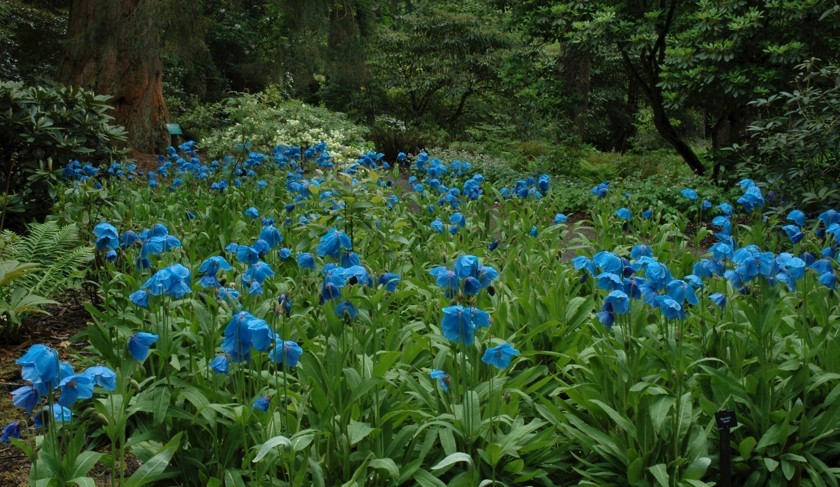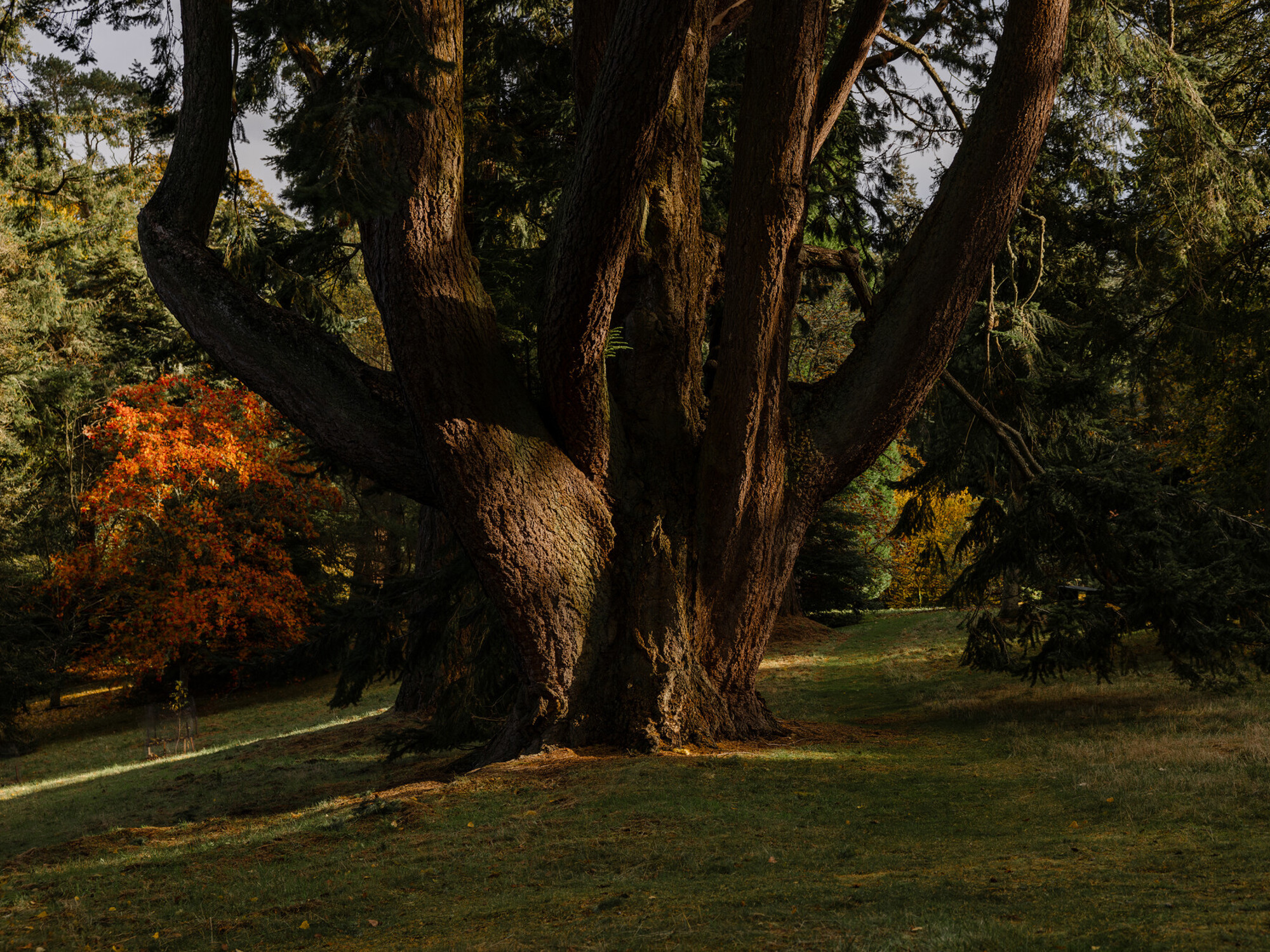
Living collection at Dawyck
Dawyck is the perfect habitat to grow plants from the mountainous regions of Europe, China, Nepal, Japan and North America. The plantings in the Garden are grouped geographically.
Dawyck is home to some old and notable trees. The oldest tree in the Garden is a silver fir (Abies alba) which was planted in 1680. It is native to the mountains of Europe and is situated on the edge of Heron Wood.Other heritage trees at the Garden include European larch (Larix decidua) which overlooks Dynamo Pond and was reputedly planted in 1725 in the presence of Carl Linnaeus, the forefather of plant nomenclature and classification.
Dawyck is home to many Douglas firs (Pseudotsuga menziesii ) grown from seed collected by David Douglas himself. Look out for the multi-stemmed specimen located west of the Visitor Centre. It was planted in 1835.
The tallest trees at Dawyck are giant redwoods (Sequoiadendron giganteum). There are many of these North American giants in the Garden and all stand well in excess of 50 metres high.
The Dawyck beech (Fagus sylvatica 'Dawyck'), in woodland to the north of Dawyck House, has become a world-renowned tree and the original still stands in good health.
Dawyck has one of the finest collections of Brewer's weeping spruce (Picea breweriana), which was originally observed by F.R.S or Fred Balfour in the Pacific Northwest of America. Seedlings were shipped to Dawyck and planted out in 1912, and many of the originals still survive.
Look out for the Garden's dawn redwood trees (Mestasequoia glyptostroboides) which were grown from seed collected from isolated (and therefore threatened) trees in Metasequoia Valley in the Chinese Province of Hubei. Other threatened species recently planted at Dawyck include the Serbian spruce (Picea omorika), the rarely cultivated Korean arbor-vitae (Thuja koraiensis) and several species from Chile including the plum yew (Prumnopitys andina).
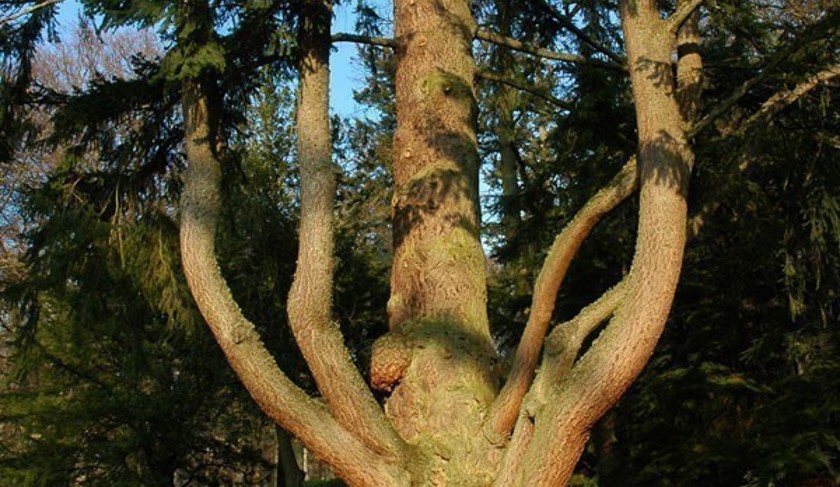
The Chapel Bank area of the Garden is a good place to appreciate some of the original rhododendron plantings, some in excess of 100 years old.Rhododendron wardii bears bright yellow-cupped flowers, while Rhododendron alutaceum has leathery, hair-covered leaves and a faint smell of cocoa.
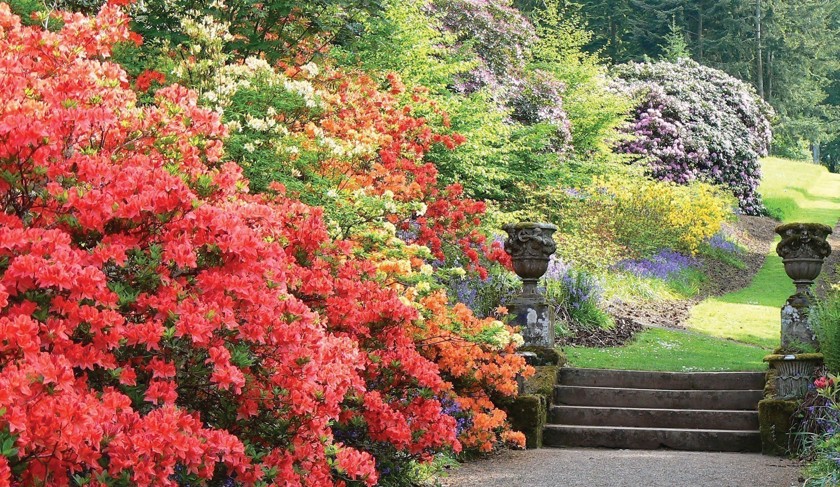
Bisecting the Garden east to west, in the late spring to early summer this area is a wonder of colour and scent. Many hardy hybrid azaleas provide a spectacular display.
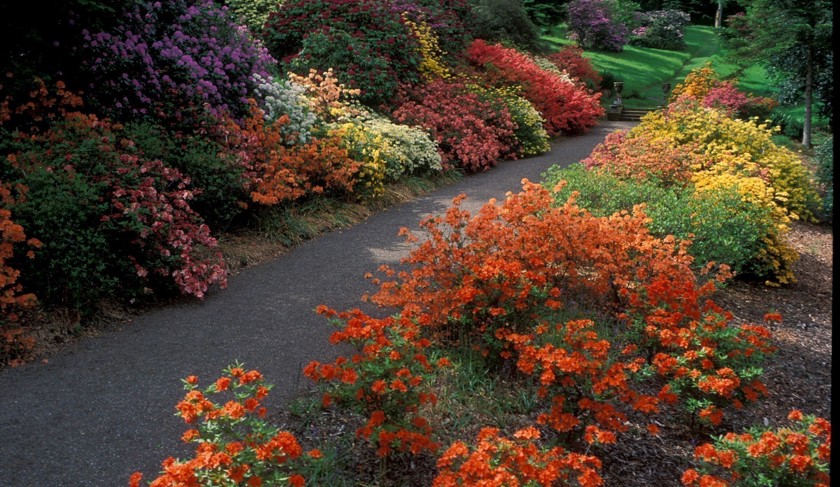
The Heron Wood Reserve was established as a cryptogamic sanctuary in 1993 and this untended area of the Garden allows the growth and development of fungi, bryophytes (mosses, liverworts and hornworts), pteridophytes (ferns and horsetails) and algae. RBGE is a world leader in cryptogam research and this 3.5 ha (7.5 acre) area is now one of the best documented pieces of land in Britain.
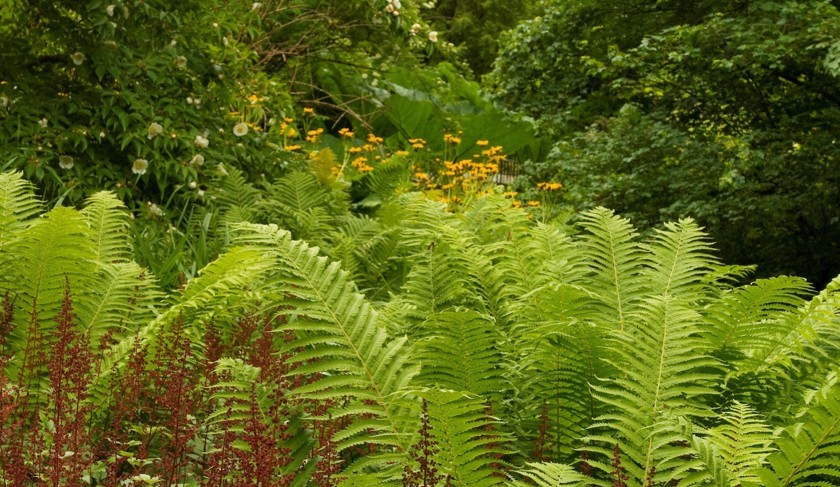
Follow the Scottish Rare Plant Trail around the Garden to see many of Scotland's most endangered and exceptional species.Look for the woolly willow (Salix lanata), a plant threatened in its native habitat by overgrazing, which RBGE has successfully introduced to the wild.
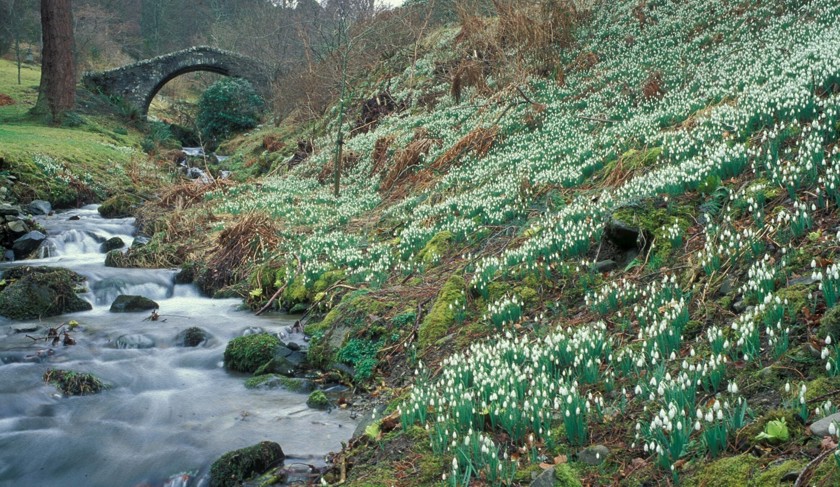
In early summer, don't miss the spectacular beds of the Himalayan blue poppy (Meconopsis x sheldonii) which form pools of sky blue beside the stream and beneath the trees.
.......
